Co2 Sequestration
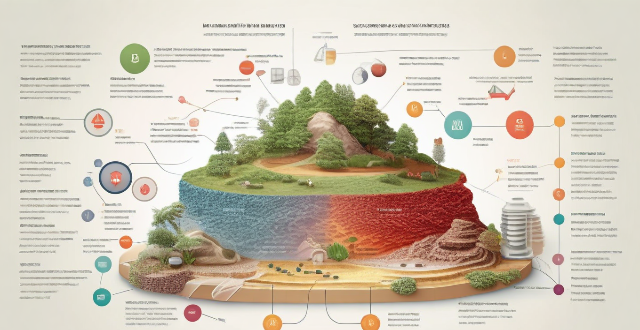
How long will it take for carbon sequestration to have a noticeable effect on atmospheric CO2 levels ?
Carbon sequestration is a process that aims to reduce atmospheric CO2 levels by capturing and storing carbon dioxide. The effectiveness of this process depends on various factors such as the rate of carbon sequestration, global emissions reduction efforts, and the health of natural carbon sinks. In the short term, it is unlikely that carbon sequestration alone will have a noticeable effect on atmospheric CO2 levels. However, in the medium to long term, if significant investments are made in scaling up carbon sequestration technologies and reducing global CO2 emissions, some noticeable effects may begin to emerge. These could include slower rates of CO2 accumulation, improved air quality, reduced global warming, and restoration of natural ecosystems. Therefore, sustained investments in carbon sequestration and other climate mitigation strategies can help achieve long-term reductions in atmospheric CO2 levels and mitigate the effects of climate change.

What are some of the most effective methods for carbon sequestration ?
Carbon sequestration refers to the process of capturing and storing carbon dioxide (CO2) from the atmosphere to mitigate its effects on climate change. There are several effective methods for carbon sequestration, including afforestation and reforestation, soil carbon sequestration, biochar production, ocean fertilization, and direct air capture (DAC). Afforestation and reforestation involve planting new trees or replacing existing ones in deforested areas, while soil carbon sequestration involves increasing the amount of organic matter in soil by adding compost, manure, or other organic materials. Biochar production involves creating a type of charcoal made from plant materials that is added to soil to improve its fertility and water-holding capacity. Ocean fertilization involves adding iron or other nutrients to the ocean to stimulate the growth of phytoplankton, which absorb CO2 through photosynthesis. Direct air capture involves using machines to capture CO2 directly from the atmosphere and then store it underground or in other long-term storage solutions.

What is carbon sequestration and how does it work ?
Carbon sequestration is a process that aims to reduce the concentration of carbon dioxide (CO2) in the atmosphere by capturing and storing it. This can be achieved through various methods, including afforestation, soil carbon sequestration, bioenergy with carbon capture and storage (BECCS), direct air capture (DAC), ocean carbon sequestration, and enhanced weathering. The benefits of carbon sequestration include mitigating climate change, improving soil health, restoring ecosystems, and creating economic opportunities. However, large-scale implementation of carbon sequestration projects faces challenges, and continued research and investment are necessary to achieve global climate goals.

What are the benefits of carbon sequestration in reducing global warming ?
Carbon sequestration helps to reduce greenhouse gas emissions and stabilize climate conditions, leading to improved air quality and public health. It also promotes sustainable development by supporting renewable energy sources and creating green infrastructure. Additionally, carbon sequestration creates job opportunities and stimulates innovation in various industries. In the long term, it preserves biodiversity and prevents extreme weather events caused by climate change.

What role do trees play in natural carbon sequestration ?
The text discusses the role of trees in natural carbon sequestration, a process that involves the removal and storage of carbon dioxide from the atmosphere. Trees absorb CO2 through photosynthesis and store it in their biomass, contributing to soil organic matter and acting as carbon sinks. Responsible forest management practices and preservation of existing forests are essential for maximizing the potential of these ecosystems for carbon sequestration and mitigating climate change.

Are there any environmental risks associated with carbon sequestration techniques ?
The topic summary for the provided text is as follows: **Carbon Sequestration Techniques and Environmental Risks** - Carbon sequestration techniques aim to reduce greenhouse gas impact on climate change by capturing and storing CO2. - Different methods include geological storage, ocean storage, terrestrial sequestration, and enhanced weathering. - Each technique comes with potential environmental risks such as leakage, induced seismicity, ocean acidification, soil health impacts, biodiversity changes, and mineral extraction impacts. - Management and mitigation strategies involve monitoring, site selection, regulatory oversight, and public engagement to minimize these risks.
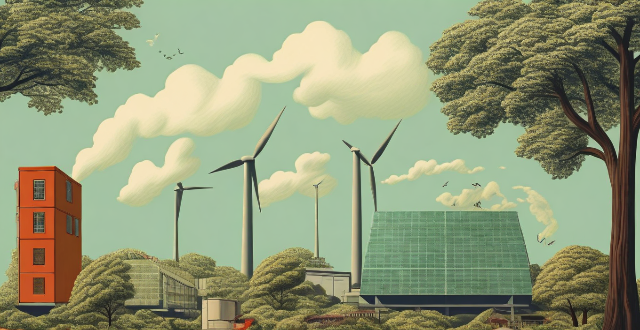
Can carbon sequestration be combined with renewable energy sources for maximum impact ?
This text discusses the potential of integrating carbon sequestration techniques with renewable energy sources to maximize their impact on mitigating climate change. It outlines various methods for carbon sequestration, such as afforestation, BECCS, DAC, and ocean sequestration. The text also describes different types of renewable energy, including solar, wind, hydroelectric, geothermal, and biomass energy. It suggests that combining these strategies can lead to synergistic effects, like integrated systems, improved energy efficiency, EVs powered by clean electricity, smart grids, and supportive public policies. Overall, the text advocates for a comprehensive approach that combines carbon sequestration and renewable energy sources to effectively combat climate change.

Is carbon sequestration a viable solution to combat climate change ?
Carbon sequestration can help reduce atmospheric CO2 levels and support renewable energy sources, but it faces technical feasibility, economic costs, storage capacity, and potential risks. It should be part of a comprehensive strategy to combat climate change.

Can carbon sequestration help to restore degraded ecosystems ?
Carbon sequestration can play a significant role in restoring degraded ecosystems by enhancing biodiversity, improving soil health, mitigating climate change, and providing ecosystem services. It should be part of a broader strategy that includes sustainable land use practices, conservation efforts, and reduction of greenhouse gas emissions.

How does carbon sequestration relate to other climate change mitigation strategies ?
Carbon sequestration is a crucial strategy in the fight against climate change. It involves the capture and storage of carbon dioxide (CO2) from the atmosphere, preventing it from contributing to global warming. This process can be natural or artificial, and it plays a significant role in reducing greenhouse gas emissions. Natural carbon sequestration occurs through processes such as photosynthesis, where plants absorb CO2 from the atmosphere and convert it into organic compounds. This process helps to remove CO2 from the atmosphere and store it in plant tissues, which can eventually become part of the soil when the plants die and decompose. Examples of natural carbon sequestration include forests, oceans, and wetlands. Artificial carbon sequestration involves human intervention to capture and store CO2. This can be done through various methods, including direct air capture, carbon capture and storage (CCS), and enhanced rock weathering. Examples of artificial carbon sequestration include direct air capture technology, CCS systems, and enhanced rock weathering techniques. Carbon sequestration is just one piece of the puzzle when it comes to mitigating climate change. Other strategies include reducing greenhouse gas emissions, increasing energy efficiency, and transitioning to renewable energy sources. Reducing greenhouse gas emissions is essential for slowing down the rate of climate change. This can be achieved through various means, such as using energy-efficient technologies, promoting public transportation, and implementing policies that encourage sustainable practices. Increasing energy efficiency helps to reduce the amount of energy needed to power our homes, businesses, and transportation systems. This can be done by upgrading buildings with better insulation, using more efficient appliances, and improving industrial processes. Transitioning to renewable energy sources, such as solar, wind, and hydroelectric power, is crucial for reducing our dependence on fossil fuels and decreasing greenhouse gas emissions. Governments and individuals can support this transition by investing in renewable energy infrastructure and adopting sustainable practices in their daily lives.

What is the cost of implementing carbon sequestration on a global scale ?
The cost of implementing carbon sequestration on a global scale varies depending on the method used, the location, and other factors. The cost per ton of CO2 removed ranges from $10-$600 for different methods such as afforestation, reforestation, direct air capture, and enhanced weathering. The total cost for global implementation ranges from $100 billion to $6 trillion per year. Several factors affect the cost, including technology development, economies of scale, policy support, social acceptance, and environmental impact. While the initial costs may be high, the long-term benefits of mitigating climate change make it a worthwhile investment.

What is the current status of carbon sequestration projects around the world ?
Carbon sequestration projects are aimed at reducing greenhouse gas emissions by capturing and storing carbon dioxide. These projects include geological storage, ocean storage, and terrestrial storage methods. Geological storage involves injecting CO2 into underground formations, while ocean storage involves injecting it into the deep ocean. Terrestrial storage uses vegetation and soil to sequester carbon through reforestation and improved forest management. These projects have been implemented in various countries worldwide, with notable examples including the Petra Nova project in the United States, the Sleipner project in Norway, and the Amazon Forest Conservation Program in Brazil.

What are the challenges associated with large-scale carbon sequestration ?
Large-scale carbon sequestration faces numerous challenges including technical obstacles, economic barriers, and social concerns. Technical challenges include developing efficient capture technology, finding suitable storage capacity, building transportation infrastructure, and ensuring ongoing monitoring and verification. Economic challenges involve high costs, lack of financial incentives, and market competition from renewable energy sources. Social and environmental challenges encompass public perception, potential environmental impacts, energy consumption, and legal and regulatory issues. Addressing these challenges requires a multidisciplinary approach involving collaboration among scientists, engineers, policymakers, and the public.

How much carbon dioxide can be sequestered through different methods ?
The amount of carbon dioxide that can be sequestered varies significantly depending on the method and site conditions. Different methods include geological storage, ocean storage, and terrestrial storage, each with different potentials and technical requirements for CO2 sequestration. Geological storage is one of the most promising methods for long-term storage of CO2. It involves injecting and storing CO2 deep underground, typically in saline formations, depleted oil and gas reservoirs, and unmineable coal seams. The potential for CO2 storage in these geological structures is influenced by various factors such as the size, depth, and permeability of the formations, as well as the existence of impermeable cap rock to contain the CO2. Deep saline formations are porous and permeable rocks filled with saltwater that can store CO2 in various forms such as free gas, dissolved in brine, or mineralized after reacting with the host rock. Depleted oil and gas reservoirs offer another option for CO2 storage. After hydrocarbon extraction, these fields have remaining pore space that can be used to inject and store CO2. Unlike saline formations, they often have pre-existing infrastructure for drilling and injection, which can reduce the cost of storage. Unmineable coal seams, also known as coal bed methane (CBM) reservoirs, can store CO2 through a process called enhanced coal bed methane recovery. In this process, injecting CO2 into coal seams displaces methane, which can be recovered as a energy source while sequestering the CO2. Ocean storage involves dissolving CO2 in seawater at great depths where it remains isolated from the atmosphere. This method relies on either natural processes like ocean upwellings or engineering techniques such as direct injection or pipeline delivery systems. While the exact storage capacity is difficult to estimate due to complex ocean dynamics, studies suggest that the global ocean could theoretically absorb thousands of gigatons of CO2. Terrestrial storage focuses on enhancing the natural processes by which ecosystems capture and store carbon. This includes reforestation, afforestation, and soil management practices that increase carbon stocks in vegetation and soils. The potential for terrestrial storage is significant but varies widely depending on factors like climate, soil type, and land use practices. Globally, it is estimated that forests alone could potentially sequester hundreds of gigatons of CO2 over several decades.

What is carbon capture and how does it work ?
Carbon capture, a technology to reduce CO2 emissions from industrial processes and power generation facilities, comprises three main types: post-combustion, oxy-fuel combustion, and pre-combustion. Each method captures CO2 differently, and the captured gas can be stored or used for other purposes. Carbon capture offers benefits such as reducing greenhouse gas emissions and supporting the transition to a low-carbon economy but faces challenges like high costs and energy requirements.

What role does deforestation play in climate change ?
The Role of Deforestation in Climate Change Deforestation contributes to climate change by reducing the Earth's capacity to absorb CO2 and releasing stored carbon back into the atmosphere. This process exacerbates the greenhouse effect, leading to global warming. Key points include: - Loss of Carbon Sinks: Trees act as natural carbon sinks, capturing and storing CO2. When forests are destroyed, these carbon sinks are lost. - Release of Stored Carbon: Deforestation releases the carbon stored in trees back into the atmosphere, increasing atmospheric CO2 levels. - Biodiversity Loss: Forests are home to a vast array of species. Deforestation leads to habitat destruction and loss of biodiversity. - Soil Erosion and Degradation: Trees help maintain soil quality. Without trees, soil can become degraded, reducing its ability to store carbon. - Albedo Effect: Forests have a darker surface than bare ground, meaning they absorb more sunlight and heat. When forests are replaced with lighter-colored surfaces like grasslands or croplands, the albedo (reflectivity) of the land increases. - Feedback Loops: Deforestation can create feedback loops that exacerbate climate change. For example, as temperatures rise due to increased CO2 levels, it becomes harder for some forests to survive, leading to further deforestation and more CO2 emissions. To combat the role of deforestation in climate change, strategies such as reforestation and afforestation, sustainable forestry practices, protection of intact forests, promotion of agroforestry, and public awareness and education can be employed.

Is carbon offsetting effective in reducing greenhouse gas emissions ?
Carbon offsetting is a strategy to compensate for CO2 emissions by investing in projects that reduce, avoid, or absorb an equivalent amount of CO2 elsewhere. While it can provide immediate action and support clean projects, there's a lack of standardization and potential for perverse incentives. Effectiveness depends on project quality and organizational integrity. It should be part of a broader strategy, not seen as a silver bullet.

What are some examples of carbon offset projects ?
Carbon offset projects are initiatives designed to reduce or offset the emission of carbon dioxide (CO2) and other greenhouse gases into the atmosphere. These projects aim to mitigate the impacts of climate change by investing in activities that remove CO2 from the atmosphere or prevent its release in the first place. In this guide, we will explore some examples of carbon offset projects and how they contribute to the global effort to combat climate change.
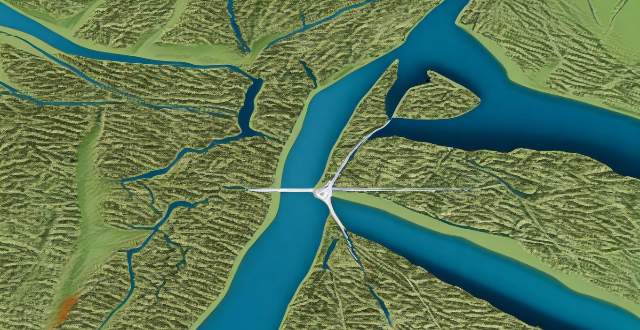
What are some examples of geoengineering techniques ?
Geoengineering techniques aim to counteract climate change through large-scale interventions in the Earth's climate system. These techniques include solar radiation management (SRM) methods like stratospheric aerosol injection and space sunshades, as well as carbon dioxide removal (CDR) strategies such as direct air capture (DAC), ocean fertilization, bioenergy with carbon capture and storage (BECCS), enhanced weathering, forestation and reforestation, and soil carbon sequestration. Other techniques involve albedo modification on Earth and atmospheric aerosol spraying. Despite their potential, these methods pose significant risks and uncertainties, necessitating further research before widespread use.

How do deforestation and forest degradation contribute to global warming ?
Deforestation and forest degradation significantly contribute to global warming by reducing carbon sequestration, increasing greenhouse gas emissions, altering the albedo effect, causing biodiversity loss, impacting the water cycle, triggering feedback loops, and posing mitigation and adaptation challenges. These processes also have economic and social impacts, such as displacement of indigenous peoples. Efforts to reduce deforestation and promote sustainable forest management are crucial in combating global warming.

How do greenhouse gas emissions contribute to ocean acidification ?
The article discusses the role of greenhouse gas emissions, particularly carbon dioxide (CO2), in causing ocean acidification. It explains how CO2 gets absorbed by seawater through a process called "carbon sequestration," which leads to changes in the chemistry of the ocean's surface waters and results in decreased pH levels. The article also highlights the negative impacts of ocean acidification on marine ecosystems, including damage to calcifying organisms and disruption of food webs. To mitigate these effects, it suggests reducing greenhouse gas emissions through various means such as transitioning to renewable energy sources, improving energy efficiency, promoting sustainable land use practices, and implementing carbon capture and storage technologies.
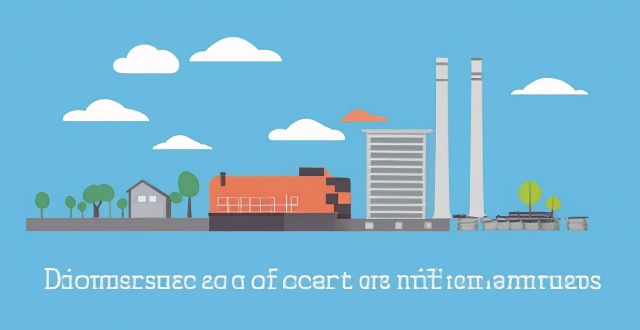
What is the significance of carbon capture and storage technologies ?
The text discusses the importance of carbon capture and storage (CCS) technologies in mitigating climate change, enabling clean energy transition, and supporting industrial processes. It highlights three main methods of capturing CO2: post-combustion capture, oxy-fuel combustion, and pre-combustion capture. The text also describes various ways to store CO2, such as geological storage, ocean storage, and enhanced oil recovery (EOR). Additionally, it mentions the potential for carbon utilization through sequestration, synthetic fuels production, and industrial applications. However, the text acknowledges challenges such as cost, energy penalty, public acceptance, and regulatory frameworks that need to be addressed for successful implementation of CCS projects.

How does urban vegetation impact air pollution levels ?
Urban vegetation, including trees, shrubs, and grasses in urban areas, plays a crucial role in mitigating air pollution. It improves air quality by reducing pollutants such as carbon dioxide (CO2), nitrogen oxides (NOx), and particulate matter (PM). Plants absorb CO2 from the atmosphere during photosynthesis, which helps to reduce the concentration of this primary greenhouse gas contributing to global warming. Trees also store carbon in their biomass, effectively removing it from the atmosphere through a process known as carbon sequestration. The large leaf surface area of urban vegetation helps to capture and reduce nitrogen oxides (NOx) in the air. When NOx comes into contact with plant leaves, it reacts with the stomata to form nitrates, which are then absorbed by the plant. Soil microorganisms play a vital role in breaking down organic matter and converting it into nutrients that plants can use. These microorganisms also help to reduce NOx levels by converting them into harmless compounds such as nitrogen gas. Urban vegetation can trap particulate matter (PM) through its leaves and bark, preventing it from being inhaled by humans and animals. This helps to reduce the health risks associated with PM exposure, such as respiratory problems and cardiovascular diseases. Trees act as wind breaks, reducing wind speed and preventing PM from becoming airborne, which helps to keep PM levels low in urban areas and improve overall air quality. In conclusion, promoting urban green spaces and encouraging the planting of more trees and shrubs in cities is essential to mitigate the negative effects of air pollution.
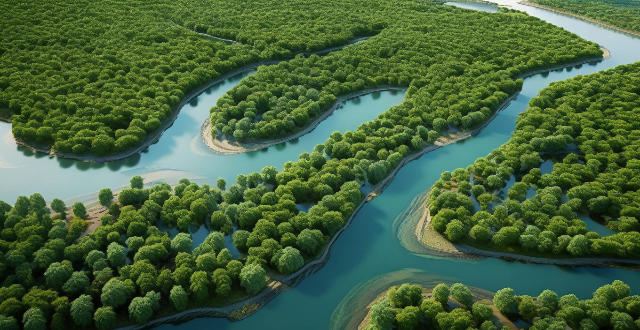
Can ecological protection areas help mitigate the impacts of climate change ?
Ecological protection areas can mitigate climate change impacts by carbon sequestration, habitat preservation, water conservation, soil erosion control, and nutrient cycling. These areas safeguard biodiversity, protect natural resources, and preserve ecosystem functions. They help reduce atmospheric CO2 levels, provide refuge for species adapting to changing environmental conditions, maintain stable water levels, filter pollutants from water sources, control soil erosion, and promote nutrient cycling processes. Supporting and expanding ecological protection areas is crucial for a sustainable future.

Can carbon capture help us achieve our climate goals ?
Carbon capture and storage (CCS) has the potential to mitigate climate change by capturing CO2 emissions from power plants and industrial processes, preventing them from entering the atmosphere. The captured CO2 can be transported to a suitable location for long-term storage or used for enhanced oil recovery. However, CCS technology faces challenges such as high costs, energy losses, and public acceptance issues. While it is not a silver bullet, CCS could play a valuable role in reducing greenhouse gas emissions when integrated with renewable energy strategies and energy efficiency measures.

How can sustainable forest management help in combating climate change ?
Sustainable forest management (SFM) is a key strategy in combating climate change. It balances ecological, economic, and social needs by managing resources without degrading the ecosystem. SFM can help mitigate climate change by enhancing carbon sequestration, promoting ecosystem health, supporting resilient communities, encouraging innovation, and strengthening policy frameworks. By maintaining biomass, reducing emissions from deforestation, conserving biodiversity, storing soil carbon, adapting to climate change impacts, creating economic benefits, fostering research, sharing technology, implementing regulations and incentives, and cooperating internationally, SFM offers a multifaceted approach to promote a greener future.

Are diesel hybrid vehicles better for the environment than regular diesel vehicles ?
Diesel hybrid vehicles, which combine a diesel engine with an electric motor, have the potential to be more environmentally friendly than regular diesel vehicles. They can offer improved fuel economy and reduced emissions of CO2 and particulate matter. However, the production of batteries for hybrid vehicles can result in higher upstream CO2 emissions, and advanced emission control systems are needed to significantly reduce NOx emissions. A comprehensive lifecycle analysis that takes into account all factors would provide a clearer picture of the environmental benefits of diesel hybrid vehicles compared to regular diesel vehicles.
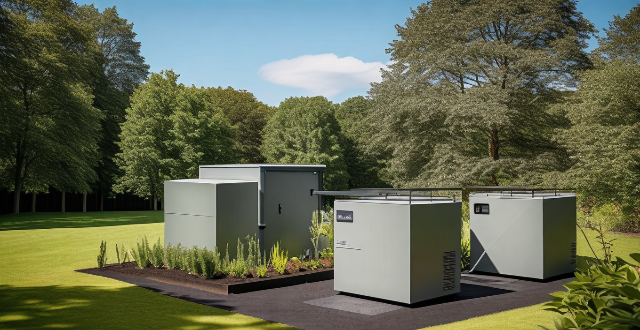
Can Climate-Smart Technologies help reduce global warming ?
Climate-smart technologies, designed to mitigate and adapt to climate change impacts, aim to reduce greenhouse gas emissions, enhance carbon sequestration, and improve resource efficiency. These technologies can help reduce global warming through energy efficiency, renewable energy, and carbon capture and storage. They also aid in adaptation through water management, agricultural innovation, and early warning systems. Co-benefits include resource conservation, economic growth, and health improvements. However, scaling up these technologies, policy support, and equity are challenges that need to be addressed for their successful implementation.

How does deforestation contribute to both climate change and biodiversity loss ?
The text discusses the impact of deforestation on climate change and biodiversity loss. It explains how trees act as carbon sinks, absorbing CO2 from the atmosphere during photosynthesis, but when forests are cleared, this process is halted, and the stored carbon is released back into the atmosphere as CO2. Deforestation also involves burning trees, which releases other greenhouse gases like methane and nitrous oxide, contributing to global warming. The text further explains how forests provide habitat for countless species of animals, insects, and plants, but clearing forests destroys these habitats, leading to a loss of biodiversity. Even partial deforestation can fragment habitats, isolating populations and reducing genetic diversity. Without tree roots to hold soil together, erosion increases, affecting water quality and availability, which can further impact species that depend on specific water sources or soil types. The text concludes that deforestation is a complex issue with far-reaching consequences for both climate change and biodiversity loss, requiring a multifaceted approach that considers both environmental protection and human needs.

How does deforestation affect global emission levels and what can be done about it ?
Deforestation significantly contributes to global emission levels, primarily through the release of carbon dioxide (CO2) and other greenhouse gases. When trees are cut down or burned, the carbon they have absorbed from the atmosphere during their lifetime is released back into the air. This process exacerbates climate change by increasing the concentration of atmospheric CO2 and other greenhouse gases, which trap heat in the Earth's atmosphere. To mitigate the effects of deforestation on global emissions, various strategies can be implemented, including reforestation, sustainable forest management, reducing demand for forest products, promoting eco-friendly alternatives, strengthening laws and policies, and raising public awareness about the importance of forests in mitigating climate change. By taking these steps, it is possible to reduce the contribution of deforestation to global emissions and work towards a healthier planet.